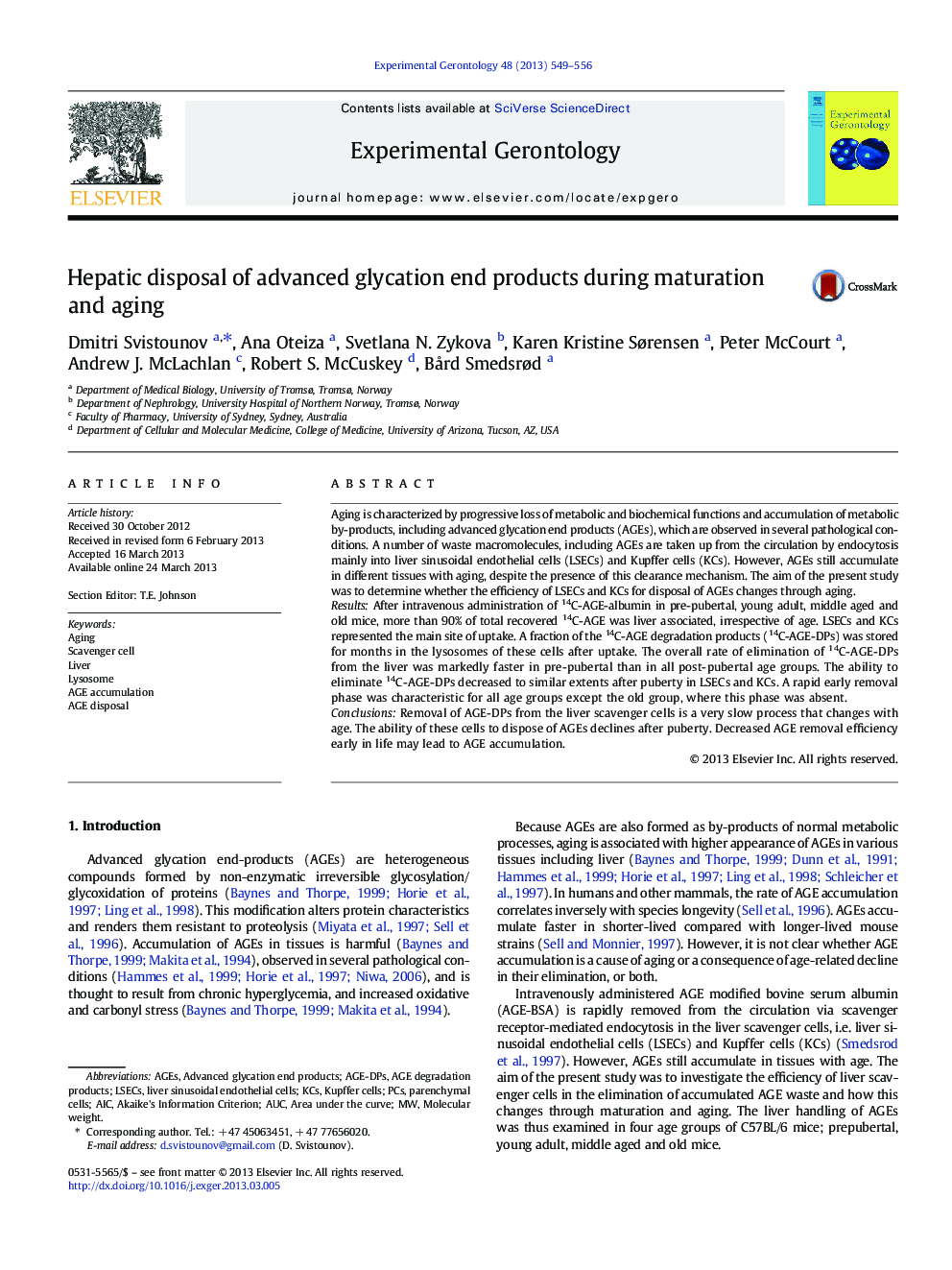| کد مقاله | کد نشریه | سال انتشار | مقاله انگلیسی | نسخه تمام متن |
|---|---|---|---|---|
| 1906465 | 1046291 | 2013 | 8 صفحه PDF | دانلود رایگان |

• 14C-AGE allows long term tracking of intracellular metabolism of the AGE-adduct.
• AGE degradation products (AGE-DPs) accumulate in lysosomes of liver scavenger cells.
• Liver scavenger cell discharge of AGE-DPs decreases after puberty.
Aging is characterized by progressive loss of metabolic and biochemical functions and accumulation of metabolic by-products, including advanced glycation end products (AGEs), which are observed in several pathological conditions. A number of waste macromolecules, including AGEs are taken up from the circulation by endocytosis mainly into liver sinusoidal endothelial cells (LSECs) and Kupffer cells (KCs). However, AGEs still accumulate in different tissues with aging, despite the presence of this clearance mechanism. The aim of the present study was to determine whether the efficiency of LSECs and KCs for disposal of AGEs changes through aging.ResultsAfter intravenous administration of 14C-AGE-albumin in pre-pubertal, young adult, middle aged and old mice, more than 90% of total recovered 14C-AGE was liver associated, irrespective of age. LSECs and KCs represented the main site of uptake. A fraction of the 14C-AGE degradation products (14C-AGE-DPs) was stored for months in the lysosomes of these cells after uptake. The overall rate of elimination of 14C-AGE-DPs from the liver was markedly faster in pre-pubertal than in all post-pubertal age groups. The ability to eliminate 14C-AGE-DPs decreased to similar extents after puberty in LSECs and KCs. A rapid early removal phase was characteristic for all age groups except the old group, where this phase was absent.ConclusionsRemoval of AGE-DPs from the liver scavenger cells is a very slow process that changes with age. The ability of these cells to dispose of AGEs declines after puberty. Decreased AGE removal efficiency early in life may lead to AGE accumulation.
Journal: Experimental Gerontology - Volume 48, Issue 6, June 2013, Pages 549–556